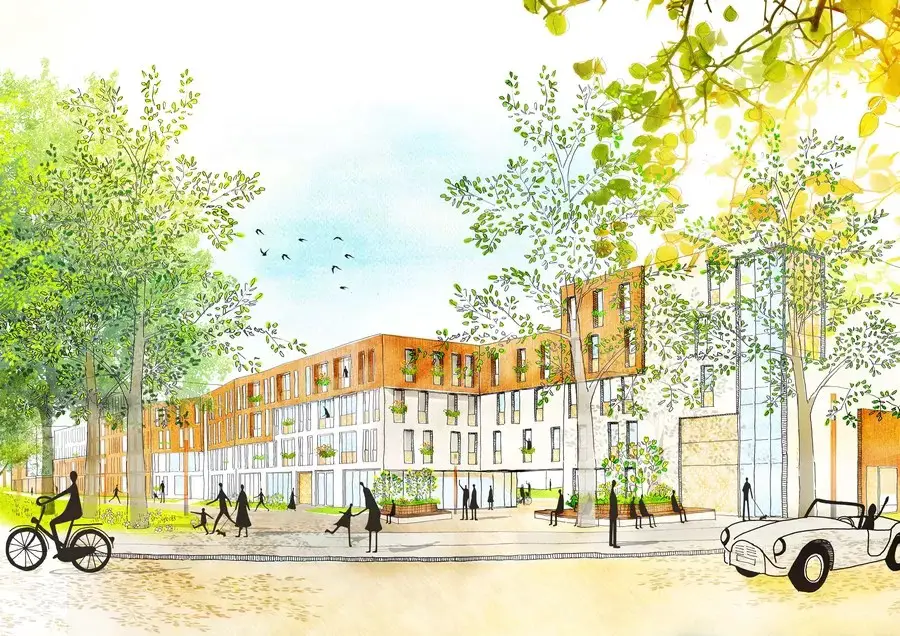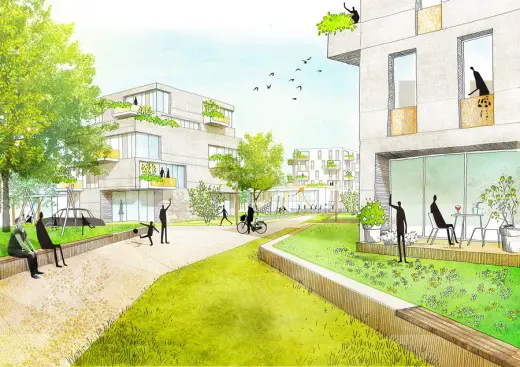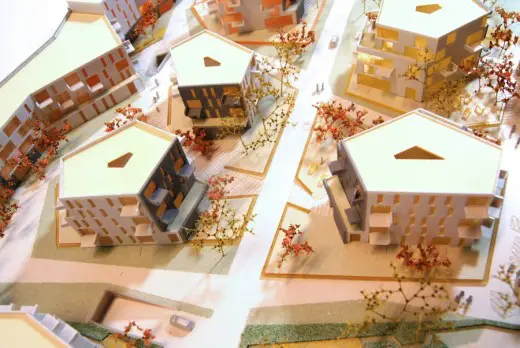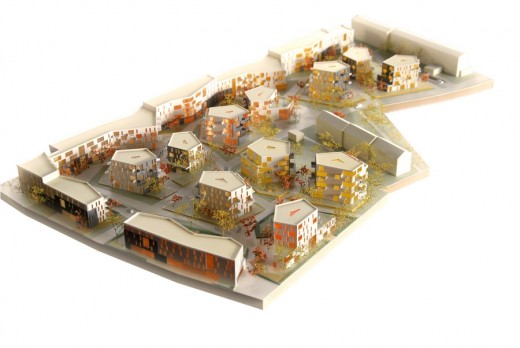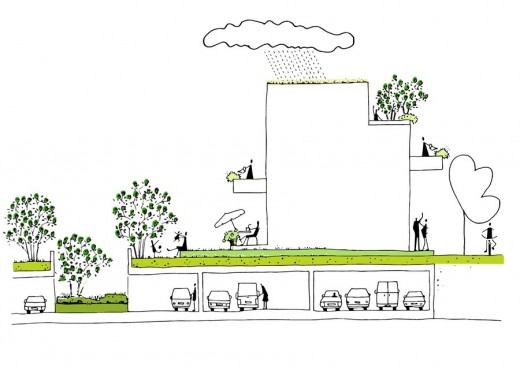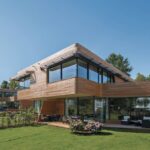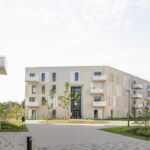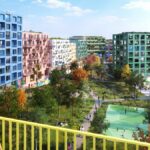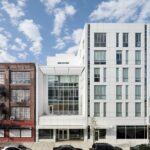Ludlstrasse Housing, Munich Building, German Residential Property, Bavaria Architecture Images
Ludlstrasse Housing Munich Property
Contemporary Bavarian Residential Building design by Felixx and Mei architects, Germany
11 Mar 2015
Design: Felixx and Mei architects
Location: Ludlstrasse, Munich, Bavaria, southern Germany
Team Mei and Felixx prize-winner for the redevelopment of a post war residential area in Munich
Ludlstrasse Housing in Munich
The largest housing association in Munich, GEWOFAG, organized a closed competition for the redevelopment of a residential area of 340 dwellings around the Ludlstrasse in Munich.
The team of Mei Architects & Planners and Felixx Landscape Architects & Planners joined the competition as one of 12 renowned international teams. With their entry ‘Neue Nachbarschaften’ they are one of the three prize winners. The jury report states: ‘It is refreshing to see how the Dutch have dealt with this design task. The Dutch are one step further in thinking about how neighborhoods should function”
Family model
The plan builds on the defined urban framework: an elongated building as a sound barrier along the highway, combined with urban villas in green. The whole district becomes part of the surrounding slow traffic network. Paths are connected to the existing infrastructure, missing connections are made, and the accessibility by public transport is strengthened.
‘Neue Nachbarschaften’ transforms the proposed residential area into a collection of new residential neighbourhoods. ”We apply the family model: every single component gets a distinctive identity, and meanwhile they are part of a bigger entity” states Robert Winkel, Director of Mei. That bigger entity is the surrounding public realm. ”By incorporating this realm into every building, at different levels, we shape the transition between public and private space” adds Michiel Van Driessche, partner at Felixx.
Sport fields and playgrounds are realized within the public domain. Two nurseries, a nursing home, a community centre and various studio spaces activate the public realm. At these particular places, paths are widened and transformed into small squares, as new reference and meeting points.
Different neighbourhoods: know where you live!
Several smaller neighbourhoods are distinguished within the public domain: new ‘Nachbarschaften’. Therefore two, sometimes three buildings are clustered around a central square. The surrounding ground level is slightly lifted, with an elevated seating edge, to clearly articulate the neighbourhoods. The clustered buildings are designed as entities with their own character and identity. With movable chairs the green area can be tailored to the personal mood and needs of the residents, and the space is equipped with playgrounds for smaller children. These new neighborhoods create a feeling of solidarity and safety, stimulate interaction and ensure the emergence of a social cohesion.
Homes: know your neighbour!
Gradually sloping building sections create an optimal connection with nature and sunlight accession.
Each building has a set-back with private garden, each apartment has a balcony, loggia or terrace. Through this, the green space is also extended into the buildings, getting a private character.
The different neighbourhoods have their own expression, based on shared architecture principles. The alternated balconies stimulate the interaction between neighbours. Vertical windows allow for maximum day-light, and strengthen the relation with the environment. The bright, stucco facades have a subtle surface profiling. The entrance facades – lying opposite one another in a neighborhood – are an exception: they are constructed of smooth and glossy precast concrete. The aluminum balcony fences and façade elements are decorated with different natural design motifs, in a different color.
The three levels of outdoor space – public park, neighbourhood domain, and private gardens- are connected through the use of a typical plant. The Amelanchier grows in the public park, the area around the buildings, and in containers on the balconies. During springtime they bloom, in the fall they have a very special autumn colour. Twice a year, the area is very recognizably connected.
In the next phase, the different winners will work on the further development of the plan.
Ludlstrasse Housing – Building Information
Felixx Landscape Architect & Planners:
Marnix Vink, Deborah Lambert, Michiel Van Driessche, Carlijn Klomp, Willemijn van Manen, Laura Spenkelink, Tea Hadzizulfic
Mei architects and planners:
Robert Winkel, Anja Lübke, Menno van der Woude, Rob Reintjes, Immanuel Faustle, Louise de Hullu, Rutger Kuipers, Riemer Postma, Iris Veentjer
Ludlstrasse Housing in Munich images / information from Felixx
Location: Ludlstrasse, Munich, southern Germany, western Europe
Architecture in Bavaria
Bavarian Architecture
State archive of the Evangelical Lutheran Church of Bavaria
Design: gmp · von Gerkan, Marg and Partners · Architects
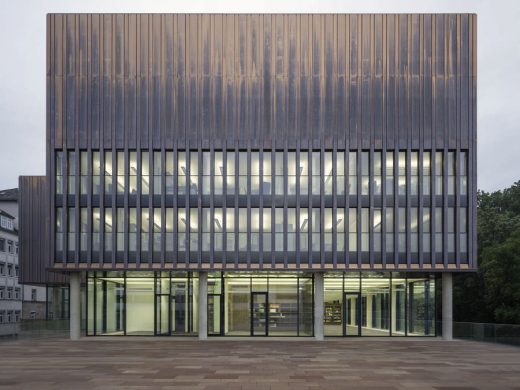
photo © Heiner Leiskat
Evangelical Lutheran Church of Bavaria, Nuremberg
T3 Audi Design Center, Ingolstadt, Bavaria, southern Germany
Architects: gmp
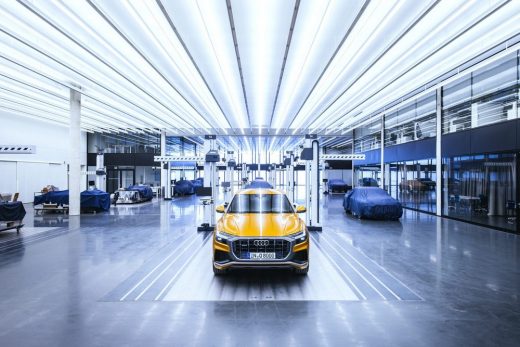
photograph © Benjamin Antony Monn
T3 Audi Design Center Building
Design: KCAP Architects&Planners
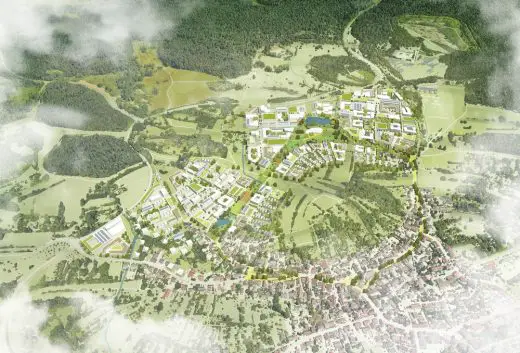
image © KCAP, Ramboll Studio Dreiseitl
Planning Dialogue Hafner Konstanz
Architecture in Germany
German Architecture
German Architecture Designs – chronological list
German Architecture – Major Cities
Comments / photos for the Ludlstrasse Housing in Munich – Contemporary House design by Felixx and Mei architects page welcome.

